Tech
What Is Ether (ETH), the Cryptocurrency of Ethereum Apps?
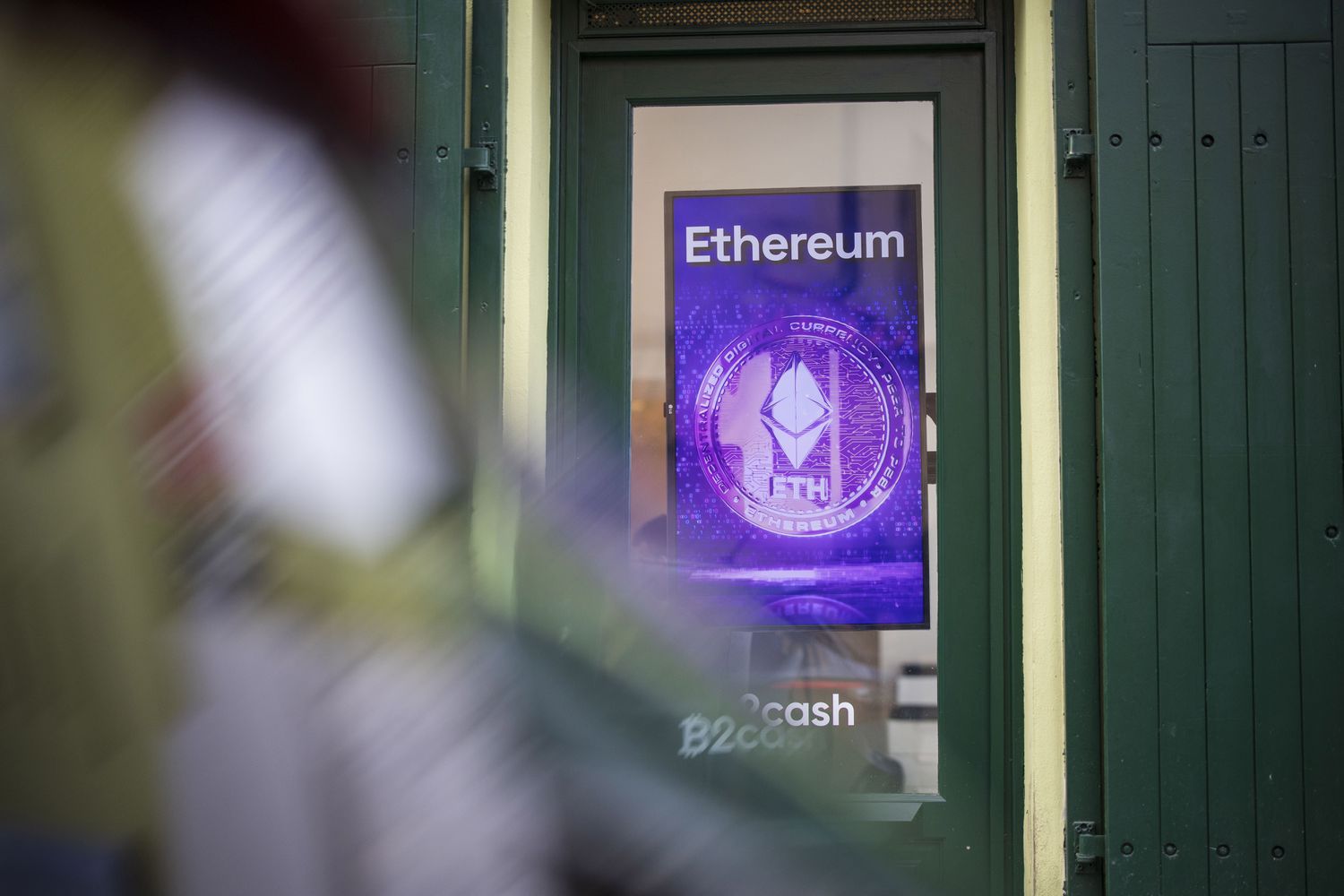
Ethereum and ether (ETH) are terms used for the ether digital currency, but that’s not quite right. Ethereum is the blockchain-based platform behind everything from financial transactions to digital art sales, all thanks to its coding language. By contrast, ether is the name of the cryptocurrency that fuels this digital ecosystem.
Understanding the distinction is a starting point for anyone looking to explore the world of digital assets. Below, we discuss the most important aspects of this cryptocurrency.
Key Takeaways
- Ethereum is a blockchain and distributed platform that allows anyone to create blockchain-based applications.
- As of May 2024, Ether (ETH) is the world’s second-largest cryptocurrency, with a market cap of about $380 billion.
- Ether pays for on-chain Ethereum transactions but can also be used as an investment, off-Ethereum payment method, or for trading on other crypto exchanges.
- Investors can also speculate on the price of ether through ether futures ETFs.
What Is Ethereum?
Ethereum is a decentralized development platform using blockchain technology. It was created to provide a base for building applications, cryptocurrencies, tokens, and other tasks needing distributed and secure databases.
With Ethereum, you can tokenize various types of information, from passwords and personal data to finances, real estate, and debt. Tokenization requires cryptographic techniques to secure and track ownership within the blockchain databases. The blockchain includes snapshots of the entire database, the cryptographic hash, and places them securely in each new block, making it impossible to alter past records.
Ethereum runs on a global network of computers (nodes) that work together to run programs called smart contracts and decentralized applications (dApps). This distributed network, powered by the Ethereum virtual machine (EVM), evades control of this information within a single system or entity, which is the decentralization blockchain proponents find crucial.
Developers use the EVM to build a wide range of dApps, including those with uses across society:
- Finance: dApps like Uniswap and Compound allow users to trade tokens or engage in decentralized finance (DeFi) directly from their digital wallets without the need for traditional banks. Imagine swapping tokens or securing a loan at any time, even in the middle of the night.
- Gaming: Ethereum hosts games like Axie Infinity, where players breed and battle digital creatures while earning rewards. It also powers virtual worlds like Decentraland, where users can buy virtual land, attend events, and socialize.
- Governance: Ethereum is also a base for decentralized autonomous organizations (DAOs) like MolochDAO. These organizations use smart contracts to make community decisions, which proponents say eliminates the need for traditional forms of governance.
While blockchain offers enhanced security, it’s important to remember that Ethereum isn’t resistant to every threat.
Ethereum is part of a movement toward a more decentralized internet that provides increased anonymity and security.
What Is Ether?
Ethereum, like any complex system, needs resources to function. It’s a distributed network, meaning there’s no central owner, but the computers (nodes) that keep it running need power and other resources to run. This requires some method of compensating for these costs. Think of it like paying your internet bill—someone has to pay for the service.
That’s where ether, Ethereum’s cryptocurrency, comes in. When you use Ethereum for an application or transaction, a small fee is paid in ETH. These fees cover the expenses of those running the nodes, like electricity and hardware. They also act as an incentive for people to contribute the use of their computer systems as a node in the wider EVP.
When discussing Ethereum’s price, you’re talking about the value of ETH. Ether is the payment method in the EVM and is used to pay network participants for the expenses (and a little extra) they incur for securing the blockchain and validating transactions.
Ether Uses
Ether has a market value that can be checked on any cryptocurrency exchange and most financial platforms. You’ll often see the name Ethereum, even though the data is for ether, the currency.
You can use ether to pay for goods or services at participating merchants and retailers. Investors, of course, trade ether for speculation, the quest to make money with money. They use strategies like those found in the stock market, such as buying and holding, day trading (buying and selling ETH throughout the day to capitalize on short-term price changes), scalping (making many small trades to profit from tiny price fluctuations), and arbitrage (taking advantage of price discrepancies between different ether exchanges).
(For more, see Investopedia’s Crypto Strategy and Education gateway.)
Like all cryptocurrencies, ether is volatile and has wide price swings. Therefore, any product derived from it is susceptible to the same swings.
How to Buy Ether
Although ether is the native cryptocurrency for Ethereum, it is also found on most cryptocurrency exchanges. You can find it on popular exchanges like Coinbase, Kraken, Gemini, Binance.US, and KuCoin.
To buy ether, you need a wallet compatible with your chosen exchange or use that exchange’s wallet. Generally, you link a bank account with your wallet and transfer funds to the exchange to begin trading.
Should You Invest in Ether?
Whether to buy crypto was once only a question for a few tech enthusiasts and early adopters, but now it’s commonly asked by many mainstream investors. How you answer depends on what you want to use it for. For instance, if you want to shop online with fewer entities knowing what you’re doing, ether is an excellent way to do that. You only need to buy the amount of ether you’ll need and spend it at an online retailer that accepts it. However, factor in the transaction fees Ethereum charges—you may pay a few dollars in fees for the convenience, plus sales tax.
If you’re considering investing in ether, it’s prudent to talk to a professional financial planner and discuss how ether might work as part of your portfolio. Cryptocurrencies are volatile, so it helps to have a professional’s assistance. To invest in ether, you could put money into companies developing products using Ethereum. For example, ConsenSys, a blockchain software company, builds tools and applications directly on the Ethereum platform. Others, like Microsoft Corporation (MSFT) and Amazon.com Inc. (AMZN), have been using Ethereum-based products for identification security and supply chain tracking for about a decade. Meanwhile, gaming firms, such as the developers of Decentraland and Axie Infinity, utilize Ethereum to create virtual worlds and digital experiences.
Ether Futures ETFs
Advantages and Disadvantages of Ether Futures ETFs
Pros
-
An easier way to invest in ether
-
No need to worry about safely storing the currency
-
ETFs are regulated investments
Cons
-
Ether can only be tracked with derivatives contracts
-
Returns may not mirror the returns from ether
-
Expense ratios can be high
-
ETF holdings are tied to the value of ETH, which is not a regulated investment
Trusts and funds from firms like Grayscale Ethereum Trust (ETHE), a publicly traded company that manages crypto-based exchange-traded funds (ETFs), are also available. These provide investors with exposure to ether without needing to purchase or store the cryptocurrency directly. ETHE is traded over the counter, meaning you can trade shares through your regular brokerage account. Its ETFs are also available that way.
Typically, ETFs track the price performance of their subject by investing in a portfolio of them. However, the U.S. Securities and Exchange Commission (SEC) has prohibited ETF managers from directly holding ether in their portfolios. However, the SEC has allowed ETFs to hold a portfolio of futures contracts tied to the expected prices of ETH. Futures are contracts to buy or sell an asset at a preset price on a given date. By holding these contracts, the ETF provides a means for mainstream investors to speculate on the value of ether through regulated exchanges in the U.S.
Ether futures ETFs like the VanEck Ethereum Strategy ETF (EFUT) and the ProShares Ether Strategy ETF (EETH) began trading in October 2023. Their debut was underwhelming. However, once spot bitcoin ETFs were approved a few months later, interest in crypto and the value of ETH spiked. In short order, EFUT and EETH nearly doubled their post-listing returns. Soon enough, though, their value pulled back significantly but still above their October 2024 pricing, demonstrating the volatility of crypto-related securities.
Two notable drawbacks of futures ETFs are higher fees than holding crypto directly (derivatives bringing more managerial complications), which can produce less returns than the target asset. To invest, find a broker that offers these types of ETFs, then open an investment account and start trading.
Ether Spot ETFs
Ether ETFs can only invest in futures contracts, not ETH tokens. Fund managers like VanEck, Grayscale, and Fidelity want to change that, having applied to the SEC to offer ETFs that directly hold ether.
Once spot bitcoin ETFs were approved, proponents thought the SEC might look more favorably on the idea than it had previously when it rejected earlier spot ETH ETF proposals. In recent years, the SEC has ramped up its enforcement of digital assets (doubling the size of its crypto investigations unit in 2022 and 2023). As we’ve reported, it thus seems the regulator is less, not more, inclined to allow spot ether ETFs. Unlike bitcoins, which are classified as commodities and hence regulated by the Commodities Futures Trading Commission, the SEC thinks ether might be more like a security than its crypto cousin, which could further hold up ETH ETF proposals. Meanwhile, the SEC hasn’t given up its well-known skepticism about crypto as investments.
If ETH is a security, all the SEC’s relevant regulations on trading them would apply, including transparency rules, not just when trading ether but also before a spot ETH ETF could trade on U.S. exchanges. The crux of the issue appears to be one major difference between Ethereum and Bitcoin, which is the former’s staking mechanism. Ethereum participants lock up their ether for collateral to support the platform’s blockchain in exchange for rewards. In the past, the SEC has initiated enforcement actions against exchanges like Kraken for their staking products, which it says are illegal, unregulated securities offerings. The SEC was already reluctant to allow spot bitcoin ETFs—an August 2023 appeals court ruling appeared to force its hand—and this seems to provide it with the reason it needs to keep spot ETH ETFs off American exchanges for now.
Is Ether a Good Investment?
Whether ether is a good investment depends on your outlook. If you believe ether’s price will go up, you can tolerate cryptocurrency’s risks and invest money you can afford to lose, ether might be a suitable investment. It’s always best to talk to a financial advisor before buying a cryptocurrency (or any investment product) to ensure you can withstand the volatility.
What Is Proof of Stake (PoS), and How Does It Relate to Ethereum?
PoS is a consensus mechanism used by blockchain networks to validate and secure transactions. In PoS, validators are chosen to create new blocks and confirm transactions based on the number of cryptocurrency tokens they hold and are willing to “stake” as collateral. It uses far less energy than its earlier proof of work model, which remains the means by which new bitcoins are produced.
How Much Will Ethereum Be Worth in 2030?
It’s difficult to predict a cryptocurrency’s price in 2030—or even if it will still exist.
Any outcome depends on Ethereum’s adoption rates, technological advances, regulatory developments, market sentiment, and macroeconomic factors.
The Bottom Line
Ether is a cryptocurrency used in Ethereum’s global virtual machine. It was created to compensate Ethereum participants for securing the blockchain and validating transactions, but it can also be used to pay for various goods and services. People also buy the world’s second-biggest cryptocurrency with the view of later selling it at a higher price. Options for capturing returns from a rise in its price include ether futures ETFs, which trade on U.S. exchanges. Thus far, spot ether ETFs do not. Like other digital currencies, ether’s value is volatile.
The comments, opinions, and analyses expressed on Investopedia are for informational purposes only. Read our warranty and liability disclaimer for more info. As of the date this article was written, the author owns BTC and XRP.
Tech
Harvard Alumni, Tech Moguls, and Best-Selling Authors Drive Nearly $600 Million in Pre-Order Sales
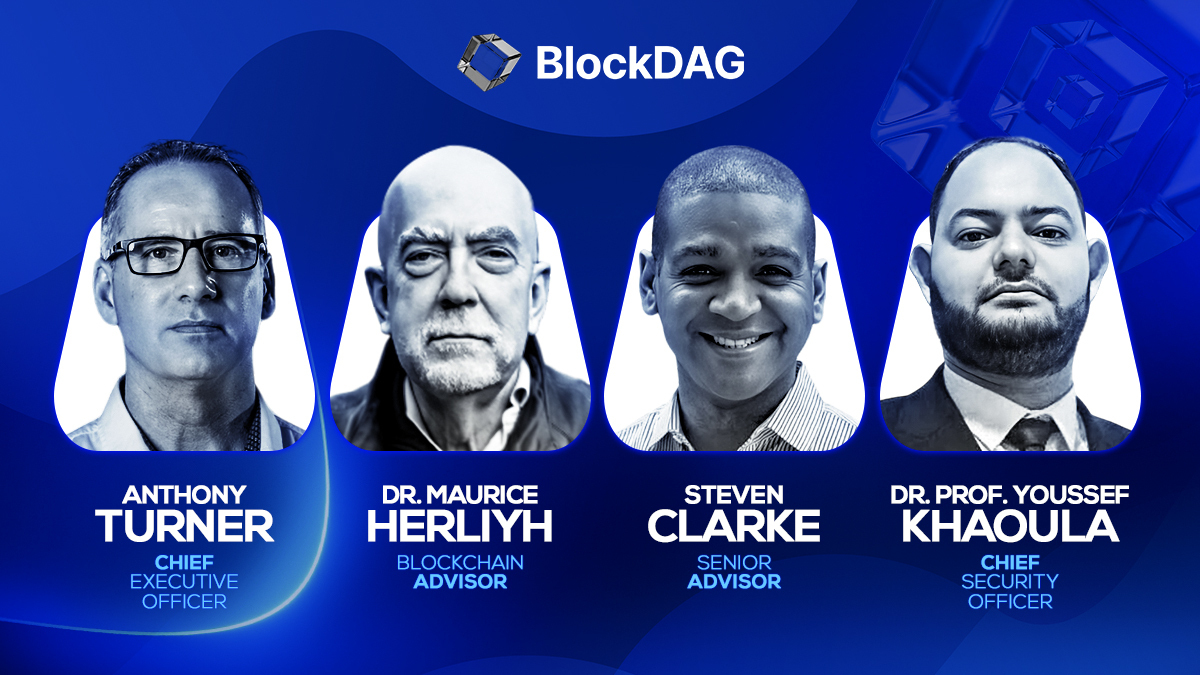
BlockDAG Network’s history is one of innovation, perseverance, and a vision to push the boundaries of blockchain technology. With Harvard alumni, tech moguls, and best-selling authors at the helm, BlockDAG is rewriting the rules of the cryptocurrency game.
CEO Antony Turner, inspired by the successes and shortcomings of Bitcoin and Ethereum, says, “BlockDAG leverages existing technology to push the boundaries of speed, security, and decentralization.” This powerhouse team has led a staggering 1,600% price increase in 20 pre-sale rounds, raising over $63.9 million. The secret? Unparalleled expertise and a bold vision for the future of blockchain.
Let’s dive into BlockDAG’s success story and find out what the future holds for this cryptocurrency.
The Origin: Why BlockDAG Was Created
In a recent interview, BlockDAG CEO Antony Turner perfectly summed up why the market needs BlockDAG’s ongoing revolution. He said:
“The creation of BlockDAG was inspired by Bitcoin and Ethereum, their successes and their shortcomings.
If you look at almost any new technology, it is very rare that the first movers remain at the forefront forever. Later incumbents have a huge advantage in entering a market where the need has been established and the technology is no longer cutting edge.
BlockDAG has done just that: our innovation is incorporating existing technology to provide a better solution, allowing us to push the boundaries of speed, security, and decentralization.”
The Present: How Far Has BlockDAG Come?
BlockDAG’s presale is setting new benchmarks in the cryptocurrency investment landscape. With a stunning 1600% price increase over 20 presale lots, it has already raised over $63.9 million in capital, having sold over 12.43 billion BDAG coins.
This impressive performance underscores the overwhelming confidence of investors in BlockDAG’s vision and leadership. The presale attracted over 20,000 individual investors, with the BlockDAG community growing exponentially by the hour.

These monumental milestones have been achieved thanks to the unparalleled skills, experience and expertise of BlockDAG’s management team:
Antony Turner – Chief Executive Officer
Antony Turner, CEO of BlockDAG, has over 20 years of experience in the Fintech, EdTech, Travel and Crypto industries. He has held senior roles at SPIRIT Blockchain Capital and co-founded Axona-Analytics and SwissOne. Antony excels in financial modeling, business management and scaling growth companies, with expertise in trading, software, IoT, blockchain and cryptocurrency.
Director of Communications
Youssef Khaoulaj, CSO of BlockDAG, is a Smart Contract Auditor, Metaverse Expert, and Red Team Hacker. He ensures system security and disaster preparedness, and advises senior management on security issues.
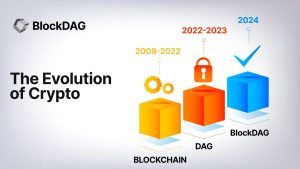
advisory Committee
Steven Clarke-Martin, a technologist and consultant, excels in enterprise technology, startups, and blockchain, with a focus on DAOs and smart contracts. Maurice Herlihy, a Harvard and MIT graduate, is an award-winning computer scientist at Brown University, with experience in distributed computing and consulting roles, most notably at Algorand.
The Future: Becoming the Cryptocurrency with the Highest Market Cap in the World
Given its impressive track record and a team of geniuses working tirelessly behind the scenes, BlockDAG is quickly approaching the $600 million pre-sale milestone. This crypto powerhouse will soon enter the top 30 cryptocurrencies by market cap.
Currently trading at $0.017 per coin, BlockDAG is expected to hit $1 million in the coming months, with the potential to hit $30 per coin by 2030. Early investors have already enjoyed a 1600% ROI by batch 21, fueling a huge amount of excitement around BlockDAG’s presale. The platform is seeing significant whale buying, and demand is so high that batch 21 is almost sold out. The upcoming batch is expected to drive prices even higher.

Invest in BlockDAG Pre-Sale Now:
Pre-sale: https://purchase.blockdag.network
Website: https://blockdag.network
Telegram: https://t.me/blockDAGnetwork
Discord: Italian: https://discord.gg/Q7BxghMVyu
No spam, no lies, just insights. You can unsubscribe at any time.
Tech
How Karak’s Latest Tech Integration Could Make Data Breaches Obsolete

- Space and Time uses zero-knowledge proofs to ensure secure and tamper-proof data processing for smart contracts and enterprises.
- The integration facilitates faster development and deployment of Distributed Secure Services (DSS) on the Karak platform.
Karak, a platform known for its strong security capabilities, is enhancing its Distributed Secure Services (DSS) by integrating Space and Time as a zero-knowledge (ZK) coprocessor. This move is intended to strengthen trustless operations across its network, especially in slashing and rewards mechanisms.
Space and Time is a verifiable processing layer that uses zero-knowledge proofs to ensure that computations on decentralized data warehouses are secure and untampered with. This system enables smart contracts, large language models (LLMs), and enterprises to process data without integrity concerns.
The integration with Karak will enable the platform to use Proof of SQL, a new ZK-proof approach developed by Space and Time, to confirm that SQL query results are accurate and have not been tampered with.
One of the key features of this integration is the enhancement of DSS on Karak. DSS are decentralized services that use re-staked assets to secure the various operations they provide, from simple utilities to complex marketplaces. The addition of Space and Time technology enables faster development and deployment of these services, especially by simplifying slashing logic, which is critical to maintaining security and trust in decentralized networks.
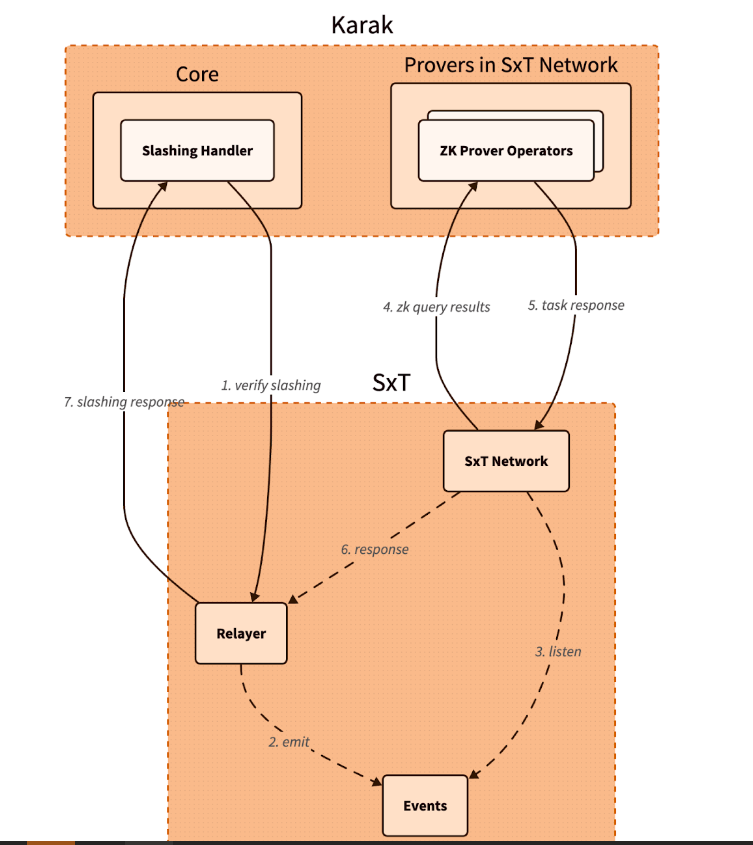
Additionally, Space and Time is developing its own DSS for blockchain data indexing. This service will allow community members to easily participate in the network by running indexing nodes. This is especially beneficial for applications that require high security and decentralization, such as decentralized data indexing.
The integration architecture follows a detailed and secure flow. When a Karak slashing contract needs to verify a SQL query, it calls the Space and Time relayer contract with the required SQL statement. This contract then emits an event with the query details, which is detected by operators in the Space and Time network.
These operators, responsible for indexing and monitoring DSS activities, validate the event and route the work to a verification operator who runs the query and generates the necessary ZK proof.
The result, along with a cryptographic commitment on the queried data, is sent to the relayer contract, which verifies and returns the data to the Karak cutter contract. This end-to-end process ensures that the data used in decision-making, such as determining penalties within the DSS, is accurate and reliable.
Karak’s mission is to provide universal security, but it also extends the capabilities of Space and Time to support multiple DSSs with their data indexing needs. As these technologies evolve, they are set to redefine the secure, decentralized computing landscape, making it more accessible and efficient for developers and enterprises alike. This integration represents a significant step towards a more secure and verifiable digital infrastructure in the blockchain space.
Website | X (Twitter) | Discord | Telegram
No spam, no lies, just insights. You can unsubscribe at any time.
Tech
Cryptocurrency Payments: Should CFOs Consider This Ferrari-Approved Trend?

Iconic Italian luxury carmaker Ferrari has announced the expansion of its cryptocurrency payment system to its European dealer network.
The move, which follows a successful launch in North America less than a year ago, raises a crucial question for CFOs across industries: Is it time to consider accepting cryptocurrency as a form of payment for your business?
Ferrari’s move isn’t an isolated one. It’s part of a broader trend of companies embracing digital assets. As of 2024, we’re seeing a growing number of companies, from tech giants to traditional retailers, accepting cryptocurrencies.
This change is determined by several factors:
- Growing mainstream adoption of cryptocurrencies
- Growing demand from tech-savvy and affluent consumers
- Potential for faster and cheaper international transactions
- Desire to project an innovative brand image
Ferrari’s approach is particularly noteworthy. They have partnered with BitPay, a leading cryptocurrency payment processor, to allow customers to purchase vehicles using Bitcoin, Ethereum, and USDC. This satisfies their tech-savvy and affluent customer base, many of whom have large digital asset holdings.
Navigating Opportunities and Challenges
Ferrari’s adoption of cryptocurrency payments illustrates several key opportunities for companies considering this move. First, it opens the door to new customer segments. By accepting cryptocurrency, Ferrari is targeting a younger, tech-savvy demographic—people who have embraced digital assets and see them as a legitimate form of value exchange. This strategy allows the company to connect with a new generation of affluent customers who may prefer to conduct high-value transactions in cryptocurrency.
Second, cryptocurrency adoption increases global reach. International payments, which can be complex and time-consuming with traditional methods, become significantly easier with cryptocurrency transactions. This can be especially beneficial for businesses that operate in multiple countries or deal with international customers, as it potentially reduces friction in cross-border transactions.
Third, accepting cryptocurrency positions a company as innovative and forward-thinking. In today’s fast-paced business environment, being seen as an early adopter of emerging technologies can significantly boost a brand’s image. Ferrari’s move sends a clear message that they are at the forefront of financial innovation, which can appeal to customers who value cutting-edge approaches.
Finally, there is the potential for cost savings. Traditional payment methods, especially for international transactions, often incur substantial fees. Cryptocurrency transactions, on the other hand, can offer lower transaction costs. For high-value purchases, such as luxury cars, these savings could be significant for both the business and the customer.
While the opportunities are enticing, accepting cryptocurrency payments also presents significant challenges that businesses must address. The most notable of these is volatility. Cryptocurrency values can fluctuate dramatically, sometimes within hours, posing potential risk to businesses that accept them as payment. Ferrari addressed this challenge by implementing a system that instantly converts cryptocurrency received into traditional fiat currencies, effectively mitigating the risk of value fluctuations.
Regulatory uncertainty is another major concern. The legal landscape surrounding cryptocurrencies is still evolving in many jurisdictions around the world. This lack of clear and consistent regulations can create compliance challenges for companies, especially those operating internationally. Companies must remain vigilant and adaptable as new laws and regulations emerge, which can be a resource-intensive process.
Implementation costs are also a significant obstacle. Integrating cryptocurrency payment systems often requires substantial investment in new technology infrastructure and extensive staff training. This can be especially challenging for small businesses or those with limited IT resources. The costs are not just financial; a significant investment of time is also required to ensure smooth implementation and operation.
Finally, security concerns loom large in the world of cryptocurrency transactions. While blockchain technology offers some security benefits, cryptocurrency transactions still require robust cybersecurity measures to protect against fraud, hacks, and other malicious activity. Businesses must invest in robust security protocols and stay up-to-date on the latest threats and protections, adding another layer of complexity and potential costs to accepting cryptocurrency payments.
Strategic Considerations for CFOs
If you’re thinking of following in Ferrari’s footsteps, here are the key factors to consider:
- Risk Assessment: Carefully evaluate potential risks to your business, including financial, regulatory, and reputational risks.
- Market Analysis: Evaluate whether your customer base is significantly interested in using cryptocurrencies for payments.
- Technology Infrastructure: Determine the costs and complexities of implementing a cryptographic payment system that integrates with existing financial processes.
- Regulatory Compliance: Ensure that cryptocurrency acceptance is in line with local regulations in all markets you operate in. Ferrari’s gradual rollout demonstrates the importance of this consideration.
- Financial Impact: Analyze how accepting cryptocurrency could impact your cash flow, accounting practices, and financial reporting.
- Partnership Evaluation: Consider partnering with established crypto payment processors to reduce risk and simplify implementation.
- Employee Training: Plan comprehensive training to ensure your team is equipped to handle cryptocurrency transactions and answer customer questions.
While Ferrari’s adoption of cryptocurrency payments is exciting, it’s important to consider this trend carefully.
A CFO’s decision to adopt cryptocurrency as a means of payment should be based on a thorough analysis of your company’s specific needs, risk tolerance, and strategic goals. Cryptocurrency payments may not be right for every business, but for some, they could provide a competitive advantage in an increasingly digital marketplace.
Remember that the landscape is rapidly evolving. Stay informed about regulatory changes, technological advancements, and changing consumer preferences. Whether you decide to accelerate your crypto engines now or wait in the pit, keeping this payment option on your radar is critical to navigating the future of business transactions.
Was this article helpful?
Yes No
Sign up to receive your daily business insights
Tech
Bitcoin Tumbles as Crypto Market Selloff Mirrors Tech Stocks’ Plunge
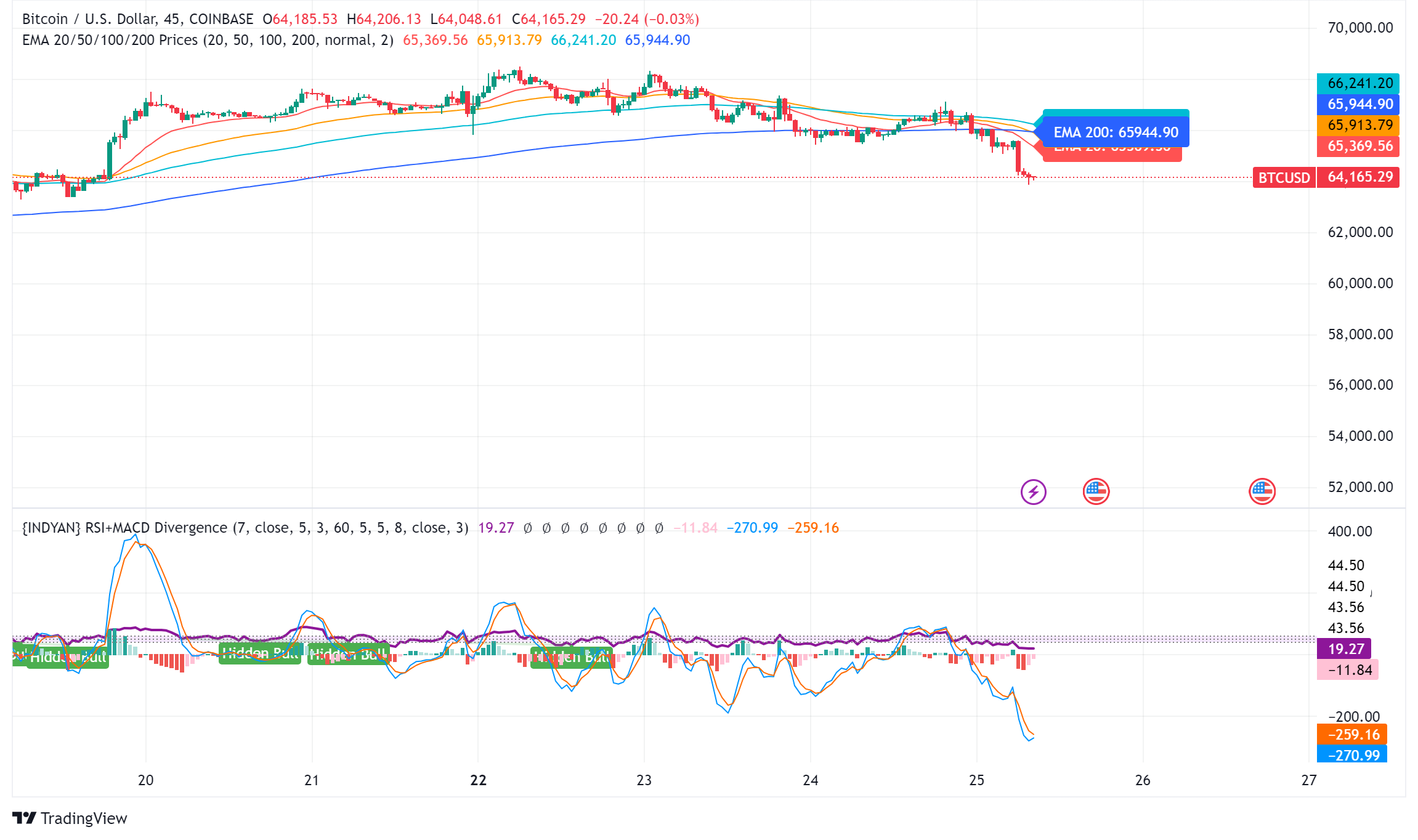
The world’s largest cryptocurrency, Bitcoin (BTC), suffered a significant price decline on Wednesday, falling below $65,000. The decline coincides with a broader market sell-off that has hit technology stocks hard.
Cryptocurrency Liquidations Hit Hard
CoinGlass data reveals a surge in long liquidations in the cryptocurrency market over the past 24 hours. These liquidations, totaling $220.7 million, represent forced selling of positions that had bet on price increases. Bitcoin itself accounted for $14.8 million in long liquidations.
Ethereum leads the decline
Ethereal (ETH), the second-largest cryptocurrency, has seen a steeper decline than Bitcoin, falling nearly 8% to trade around $3,177. This decline mirrors Bitcoin’s price action, suggesting a broader market correction.
Cryptocurrency market crash mirrors tech sector crash
The cryptocurrency market decline appears to be linked to the significant losses seen in the U.S. stock market on Wednesday. Stock market listing The index, heavily weighted toward technology stocks, posted its sharpest decline since October 2022, falling 3.65%.
Analysts cite multiple factors
Several factors may have contributed to the cryptocurrency market crash:
- Tech earnings are underwhelming: Earnings reports from tech giants like Alphabet are disappointing (Google(the parent company of), on Tuesday, triggered a sell-off in technology stocks with higher-than-expected capital expenditures that could have repercussions on the cryptocurrency market.
- Changing Political Landscape: The potential impact of the upcoming US elections and changes in Washington’s policy stance towards cryptocurrencies could influence investor sentiment.
- Ethereal ETF Hopes on the line: While bullish sentiment around a potential U.S. Ethereum ETF initially boosted the market, delays or rejections could dampen enthusiasm.
Analysts’ opinions differ
Despite the short-term losses, some analysts remain optimistic about Bitcoin’s long-term prospects. Singapore-based cryptocurrency trading firm QCP Capital believes Bitcoin could follow a similar trajectory to its post-ETF launch all-time high, with Ethereum potentially converging with its previous highs on sustained institutional interest.
Rich Dad Poor Dad Author’s Prediction
Robert Kiyosaki, author of the best-selling Rich Dad Poor Dad, predicts a potential surge in the price of Bitcoin if Donald Trump is re-elected as US president. He predicts a surge to $105,000 per coin by August 2025, fueled by a weaker dollar that is set to boost US exports.
BTC/USD Technical Outlook
Bitcoin price is currently trading below key support levels, including the $65,500 level and the 100 hourly moving average. A break below the $64,000 level could lead to further declines towards the $63,200 support zone. However, a recovery above the $65,500 level could trigger another increase in the coming sessions.
-

 Videos1 week ago
Videos1 week agoAbsolutely massive: the next higher Bitcoin leg will shatter all expectations – Tom Lee
-

 News11 months ago
News11 months agoVolta Finance Limited – Director/PDMR Shareholding
-

 News11 months ago
News11 months agoModiv Industrial to release Q2 2024 financial results on August 6
-

 News11 months ago
News11 months agoApple to report third-quarter earnings as Wall Street eyes China sales
-

 News11 months ago
News11 months agoNumber of Americans filing for unemployment benefits hits highest level in a year
-

 News1 year ago
News1 year agoInventiva reports 2024 First Quarter Financial Information¹ and provides a corporate update
-

 News1 year ago
News1 year agoLeeds hospitals trust says finances are “critical” amid £110m deficit
-

 DeFi1 year ago
DeFi1 year ago🏴☠️ Pump.Fun operated by Insider Exploit
-

 Markets1 year ago
Markets1 year agoWhale Investments in Bitcoin Hit $100 Billion in 2024, Fueling Insane Investor Optimism ⋆ ZyCrypto
-

 Tech1 year ago
Tech1 year agoBitcoin’s Correlation With Tech Stocks Is At Its Highest Since August 2023: Bloomberg ⋆ ZyCrypto
-

 News11 months ago
News11 months agoStocks wobble as Fed delivers and Meta bounces
-

 Tech1 year ago
Tech1 year agoEverything you need to know





